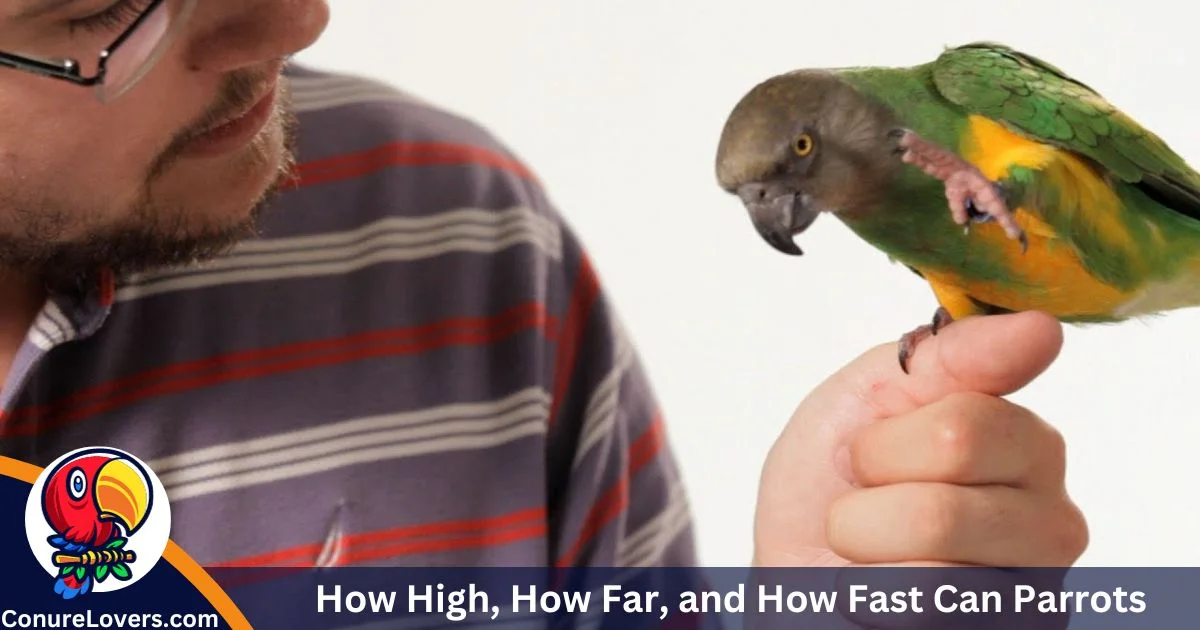Parrots can fly at different heights. They usually fly at a speed of 35 to 40 miles per hour. Every day, parrots cover several kilometers when they fly.
Parrots are natural flyers; they effortlessly take to the skies. Most parrots master flying by the age of 2 months. Sadly, some in captivity miss out on this skill, losing the chance forever.
Yet, in the wild, parrots soar daily. They fly for food, explore new territories, and engage in breeding flights. Sometimes, they take flight simply out of boredom.
In this article, I’ll do my best to address key questions about parrots’ flying abilities. How far can they fly? How fast can they go? And just how high can these vibrant birds soar? Let’s uncover the wingspan wonders of our feathered friends!
How High Can Parrots Fly?
Parrots are known for their flying abilities, except for the Kakapo parrot, which lost its flight capabilities thousands of years ago.
Unlike the Ruppell’s griffon vulture, the highest-flying bird reaching 37,000 feet, parrots don’t reach such altitudes. There are three main reasons for this.
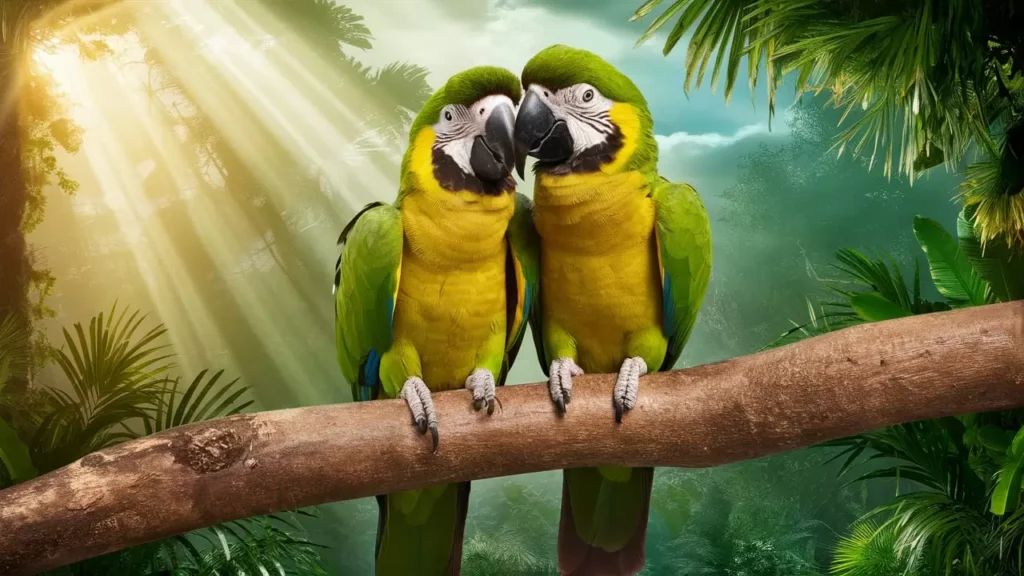
- Non-Migratory Lifestyle: Most parrots don’t migrate, avoiding the need to fly as high as 28,000 feet, a behavior seen in birds like bar-headed geese.
- Not Predators: Parrots, not being predators, don’t need to fly high for hunting. Their food is typically found in trees or on the ground, eliminating the necessity to reach extreme heights.
- Predator Risk: Flying high increases the risk of being preyed upon by hawks, eagles, and other flying predators with heightened eyesight for hunting.
So, can parrots reach extreme heights like Ruppell’s griffon vulture? No, they cannot. Parrots generally fly at lower altitudes, usually between 1,000 to 3,000 feet, unless they are migratory. Migrating parrots, such as the orange-bellied, blue-winged, and swift parrots, may reach heights of 8,000 to 10,000 feet during long journeys.
While there are no specific studies on the maximum flying altitude of parrots, especially given their diverse species and non-migratory nature, some parrots stand out. The Corella parrots, native to Australia, are known to fly in flocks up to 10,000 feet high, despite not being a migratory breed. They do this while moving from grasslands to forest trees in search of food.
How Fast Can Parrots Fly?
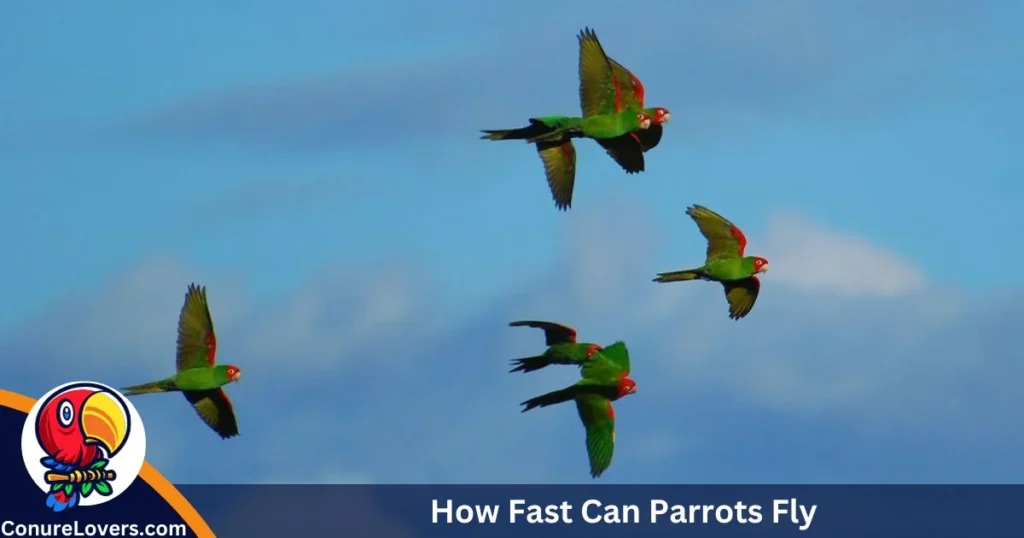
The speed at which parrots fly varies notably, influenced by their size and specific breed. Smaller parrots like parrotlets, lovebirds, or budgies tend to fly slower compared to larger breeds.
Bigger parrot breeds boast larger wings and wider wingspans. Take macaws, for instance, with a wingspan that can extend up to 45 inches. The general rule is: the wider the wingspan, the faster the parrot can fly. However, the fastest parrots typically reach speeds of around 50 miles per hour.
It’s essential to note that parrots don’t match the flying speed of Peregrine falcons, which can dive steeply at an impressive 200 miles per hour. Parrots, while skilled fliers, have their own pace in the avian world.
Read Also: 22 Parrot Diseases and Health Conditions to be Aware Of
How Far Can Parrots Fly?
The record for the farthest distance flown in a single flight by parrots goes to the Orange-bellied Parrots, covering an impressive 150 miles. These remarkable birds migrate twice a year, making the journey from mainland Australia to Tasmania, spanning around 300 miles. They take a pit stop on King Island, about halfway, before reaching their final destination over the course of a few days.

In research, Thick-billed Parrots have been radio-tracked flying a non-stop distance of 100km, and during spring migration, flights of up to 320 km in one day have been observed, although this isn’t a consistent behavior among Thick-billed parrots.
On the other hand, non-migratory larger parrot breeds like African greys, amazons, macaws, and cockatoos, cover greater distances per day compared to their smaller counterparts. These majestic birds can fly up to 50 miles per day while searching for food. They do, however, need to take a break every 10-15 miles. In situations where food is scarce, they might push themselves to cover distances up to 100 miles from their starting point.
Conversely, smaller parrot breeds fly a more modest 15 miles per day.
Do Parrots Like to Fly?
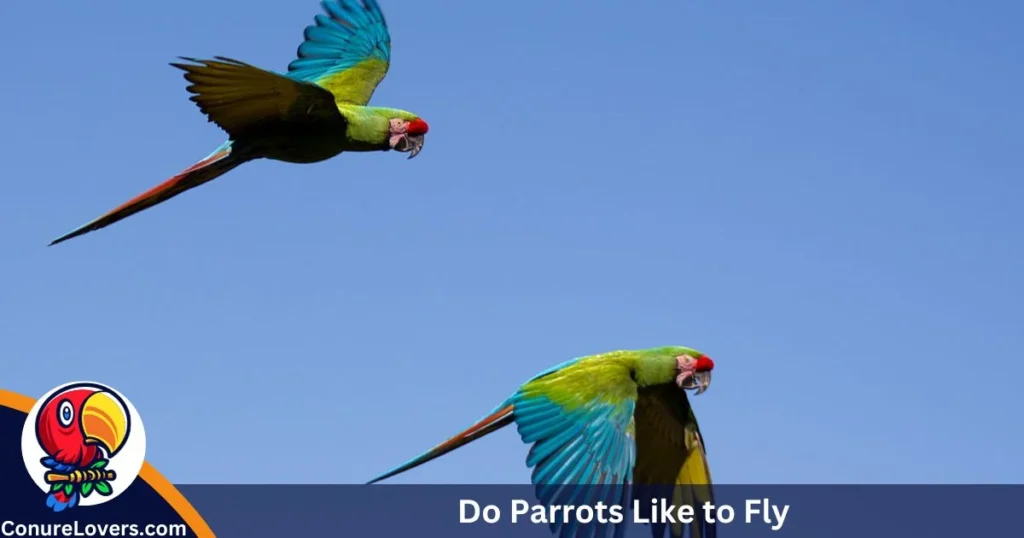
It’s a bit like asking if we enjoy walking—responses vary from person to person. Some find walking enjoyable, while others prefer sitting on the couch chatting or watching TV. Similarly, for parrots, flying is instinctual; they have wings and the ability to fly built into their bodies. But the big question is: do they actually like flying?
Well, the answer depends on their circumstances. In the wild, parrots can fly whenever they want, but it might not always be an enjoyable experience as flying can be quite exhausting for them. So, they might prefer perching on a high branch, observing the forest below.
Now, picture a parrot that knows how to fly, spending all its time inside a cage with no interaction or mate. In that case, the answer is clear – yes, they would love to fly around, exploring and exercising their wings.
Beyond personal preference, parrots have a need to fly. It’s essential for finding food, locating a mate, or finding a suitable nesting tree to raise their chicks. Even pet parrots benefit from flying, at least for exercise. So, for our feathered friends, flying isn’t just a leisure activity; it’s a crucial aspect of their natural behavior.
Are Parrots Good at Flying?
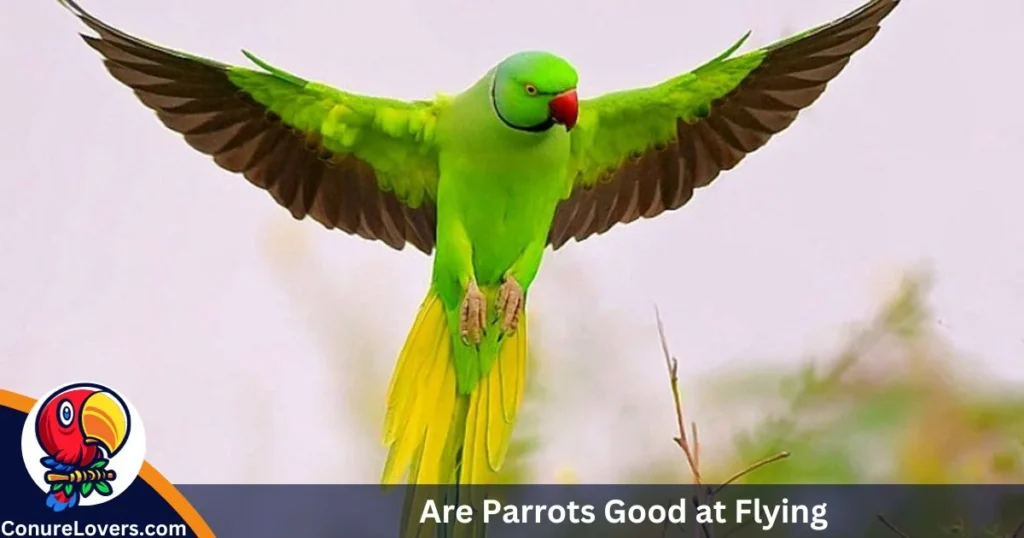
Birds are perfectly designed for flight, effortlessly executing sharp maneuvers mid-air. However, when it comes to parrots, flying prowess isn’t universal. While they can fly and glide, the skill levels vary among different breeds. Surprisingly, African grays, Macaws, and cockatoos aren’t considered top-notch fliers.
Smaller parrot breeds are more likely to develop advanced flying skills. However, in their natural habitats, parrots showcase another remarkable ability – climbing. Instead of spreading their wings and flying from one branch to another, they use their beaks and robust claws to climb, effortlessly reaching branches with more food or the ones where they’ve laid their eggs. It’s a unique feature that adds to the versatility of these vibrant birds.
Final Thoughts
Talking about various parrot breeds highlights the need for independent studies to determine specific answers. A similar situation occurred with the Ruppell’s griffon vulture; its flying height was discovered after a collision with an airplane at 37,000 feet.
This incident suggests that the flying height of Ruppell’s griffon vulture was determined by coincidence, leaving room for future investigations to provide more accurate insights.
The same uncertainty applies to the speed and distances that parrots can fly. Currently, there are no precise studies to definitively answer these questions. And that sums it up. I trust you find this article helpful and informative.

Meet James Wilson, your go-to Conure Care Expert at “Conure Lovers.” I’m here to help you create a happy and healthy life for your feathery friend. Let’s explore the world of conure companionship together!

